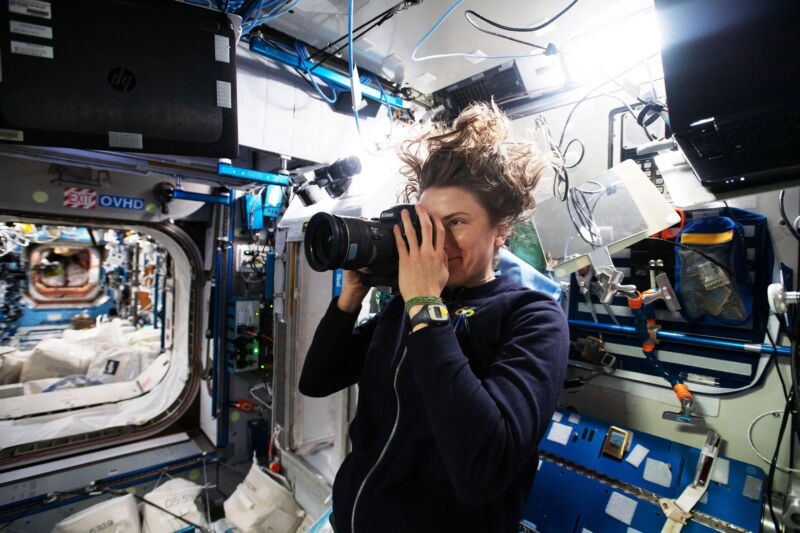
Archaeologists have probed the cultures of people all over the Earth—so why not study a unique community that’s out of this world? One team is creating a first-of-its-kind archaeological record of life aboard the International Space Station.
The new project, called the Sampling Quadrangle Assemblages Research Experiment, or SQuARE, involves hundreds of photos taken by astronauts throughout the living and work spaces of the ISS. People have continuously occupied the space station for decades, and the launch of its initial modules in the late 1990s coincided with the rise of digital photography. That meant that astronauts were no longer limited by film canisters when documenting life in space, and that space archaeologists—yes, that’s a thing—no longer had to merely speculate about it from afar.
But this is the first time archeologists have coordinated that photography so they could analyze it. The SQuARE photos, shot over 60 days last year, show everything from anti-gravity hacks to food treats enjoyed by astronauts. Justin Walsh, an archaeologist at Chapman University and the University of Southern California in Los Angeles, thinks that images like these are tremendously useful for social science researchers who want to know how people use the limited tools and material comforts available to them in space. “If we could just capture the information into a database—get the people, places and objects that are in the photos—then we could actually start to trace out the patterns of behavior there and the associations between people and things,” says Walsh, who presented the team’s preliminary findings yesterday afternoon at the Society for American Archaeology conference in Portland, Oregon.
Walsh co-leads SQuARE with Alice Gorman, an archaeologist at Flinders University in Australia. The main thing she wants to learn, she says, is, “What are the social consequences of a small isolated society so separated from Earth? What kinds of human behavior do you have, if you strip away something as fundamental as gravity?”
Contemporary archaeology involves inferring people’s social world from the physical objects and built spaces they use, which offer insights into people’s daily lives that they might not even be aware of. Scientists consider archaeology to be closely related to, or even part of, anthropology—but anthropological methods rely more on observing and interviewing. Interviews only reveal part of the story, however. Psychologists have known for decades that people are poor judges of their own behavior. Memory can be biased, and eyewitness accounts can be inaccurate.
“We’re interested in stuff people don’t remember, or even register, when they’re describing what they do in their life,” Gorman says. “Our approach is that you can see what people actually did, not just what they said they did. That’s what the archaeological record tells us.”
The ISS record includes tools, research equipment, food pouches, cleaning supplies, and other everyday objects. The team captured images of them—a “vicarious excavation,” as Gorman puts it—by having NASA and European Space Agency astronauts take daily photos from January 21 to March 21, 2022. Astronauts Kayla Barron, Matthias Maurer, and others snapped photos in six locations, including at the galley table, on a starboard workstation, on the port side of the US laboratory module, and on the wall across from a latrine. Each photo captured an area of approximately 1 square meter marked by adhesive tape at the corners—hence the SQuARE moniker—and crew members took photos with a colour calibration chart for correcting digital imagery and a ruler for scale. After amassing 358 photos, the archeology team has been combing through them, marking objects that show signs of their use, as well as ones that are in the same place in every photo, a sign they’re hardly used at all.



3175x175(CURRENT).thumb.jpg.b05acc060982b36f5891ba728e6d953c.jpg)

Recommended Comments
There are no comments to display.
Join the conversation
You can post now and register later. If you have an account, sign in now to post with your account.
Note: Your post will require moderator approval before it will be visible.